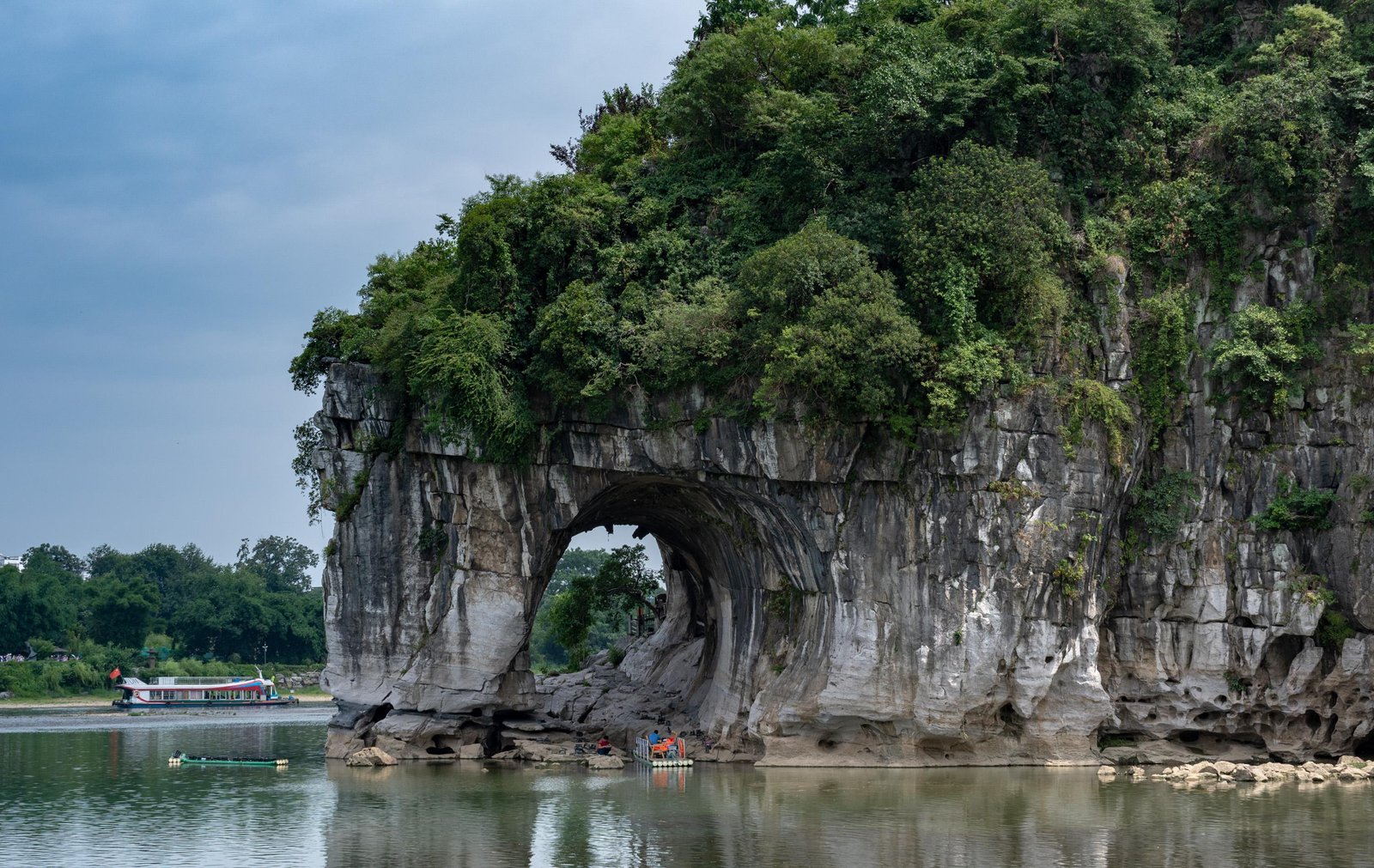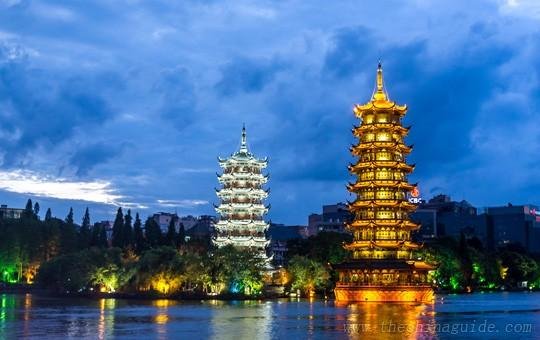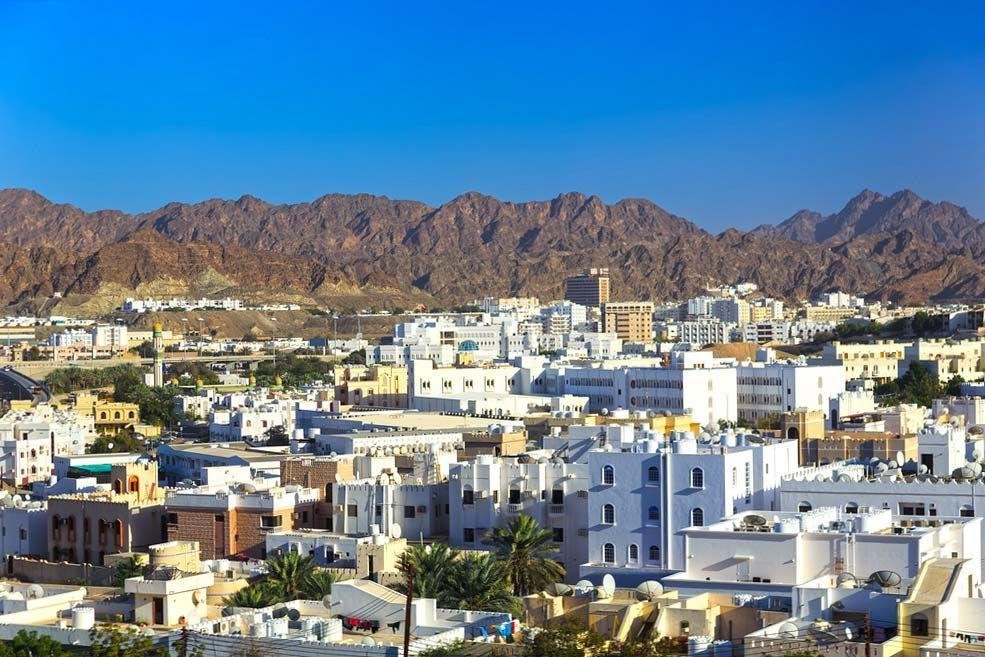Muscat, the capital city of Oman, is a captivating blend of traditional Arabian architecture and modern design, reflecti...
The Architectural Splendor of Guilin, China

Guilin, a picturesque city in southern China’s Guangxi Zhuang Autonomous Region, is renowned for its stunning karst landscape and rich cultural heritage. The architecture of Guilin reflects a unique blend of traditional Chinese styles and modern influences, harmonizing beautifully with the surrounding natural scenery. The city’s structures range from ancient pagodas to contemporary buildings, each telling a story of its historical and cultural significance.

At the heart of Guilin lies the iconic Elephant Trunk Hill, a natural rock formation resembling an elephant drinking from the Li River. This landmark is not only a symbol of the city but also features architectural elements that enhance its beauty. Nearby, the ancient Zhengyang Pedestrian Street showcases traditional Chinese architecture, with wooden buildings adorned with intricate carvings and vibrant red lanterns. This bustling street is a hub of local culture, offering shops, restaurants, and a glimpse into the region’s heritage.
One of the most notable architectural gems in Guilin is the Fubo Hill, known for its stunning views and ancient structures. The hill features the Fubo Pagoda, a seven-story tower built during the Song Dynasty. The pagoda's design incorporates elements of traditional Chinese architecture, such as curved roofs and ornate decorations. Climbing to the top rewards visitors with panoramic views of the city and the surrounding landscape, emphasizing the harmonious relationship between nature and architecture.

The Two Rivers and Four Lakes Scenic Area is another architectural highlight in Guilin. This interconnected system of rivers and lakes is lined with beautifully designed walkways, bridges, and pavilions. The area features traditional Chinese gardens, complete with rockeries, bonsai trees, and koi ponds, creating a serene environment for relaxation and reflection. The architecture in this area embodies the principles of Feng Shui, emphasizing balance and harmony with nature.
Guilin's modern architecture is equally impressive, showcasing the city's evolution as a vibrant urban center. The Guilin International Conference and Exhibition Center, with its striking contemporary design, serves as a venue for international events and exhibitions. The building's glass façade and innovative structure symbolize the city's commitment to progress and development while maintaining respect for its cultural roots.
Another modern architectural marvel is the Guilin Railway Station, which features a sleek design that blends functionality with aesthetics. The station's spacious interior and well-planned layout accommodate the increasing number of travelers visiting the region. The integration of modern transportation infrastructure with traditional architectural elements reflects Guilin's growth as a key transportation hub in southern China.
The architecture of Guilin is also significantly influenced by its ethnic diversity. The Zhuang and Yao minority groups, among others, have contributed to the region's cultural landscape. Traditional stilt houses, known as "Diaojiaolou," are characteristic of the Zhuang people and can be found in the surrounding countryside. These wooden structures, elevated on stilts, are designed to adapt to the local climate and terrain, showcasing the ingenuity of traditional architecture.

The Longji Rice Terraces, located near Guilin, exemplify the harmonious relationship between human habitation and the natural environment. The terraces, built over centuries by local farmers, feature intricate stone pathways and wooden structures that blend seamlessly with the landscape. This architectural feat not only highlights the agricultural practices of the region but also serves as a testament to the resilience and adaptability of the local communities.
Guilin is also home to numerous temples and pagodas that reflect its spiritual heritage. The Seven Star Park, named after the seven peaks that resemble the Big Dipper constellation, features the beautiful Seven Star Pagoda. This ancient structure, with its distinct architectural style, serves as a reminder of the region's historical significance and cultural practices. The park itself is a blend of natural beauty and architectural elegance, making it a popular destination for both locals and tourists.
The city’s commitment to preserving its architectural heritage is evident in ongoing restoration projects aimed at maintaining historical sites. The Yangshuo West Street, a well-preserved ancient street, showcases traditional architecture, with its stone buildings and wooden facades. This vibrant area is filled with shops, cafes, and art galleries, attracting visitors seeking to experience the charm of old Guilin.
In addition to its historical sites, Guilin’s architectural landscape is enriched by contemporary cultural institutions. The Guilin Art Museum, designed with modern aesthetics, hosts exhibitions featuring local artists and traditional crafts. The museum's architecture reflects the city's artistic spirit, providing a platform for creativity and cultural exchange.
As Guilin continues to develop, balancing modernization with the preservation of its rich architectural heritage remains a priority. The city's local government actively promotes sustainable development practices that respect the environment and cultural identity. New developments are designed to complement the existing architectural landscape, ensuring that the city retains its unique charm while embracing progress.
Public spaces in Guilin are thoughtfully designed to enhance community engagement and promote social interactions. Parks, waterfront promenades, and recreational areas feature pavilions and open-air spaces that invite residents and visitors to gather and enjoy the natural beauty of the surroundings. The architecture of these public spaces emphasizes accessibility and inclusivity, fostering a sense of belonging within the community.
Guilin's architectural identity is further shaped by its role as a center for tourism and cultural exchange. The city attracts millions of visitors each year, drawn by its breathtaking landscapes and rich history. The architecture of hotels and resorts reflects the region's natural beauty, often incorporating local materials and traditional design elements to create immersive experiences for guests.
In conclusion, the architecture of Guilin, China, is a captivating blend of traditional styles and modern innovations. From the ancient pagodas and traditional wooden houses to contemporary cultural institutions and stunning landscapes, the city showcases a diverse array of architectural elements that reflect its rich cultural heritage and dynamic evolution. The intricate designs of historical sites, the commitment to sustainability in modern developments, and the integration of nature all contribute to the unique character of this enchanting city.
As visitors explore the architectural wonders of Guilin, they are transported through centuries of history, experiencing the layers of culture that have shaped this remarkable place. Each structure tells a story, revealing the aspirations and achievements of the people who have called Guilin home throughout the ages. With its stunning architecture and vibrant atmosphere, Guilin continues to captivate the hearts of all who visit, inviting them to discover the rich narratives woven into its urban landscape. The seamless integration of tradition and modernity ensures that Guilin remains a fascinating destination for those seeking to experience the beauty and complexity of its architectural heritage.
Share:




